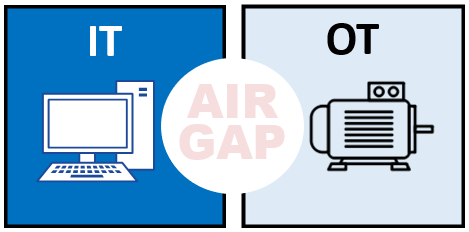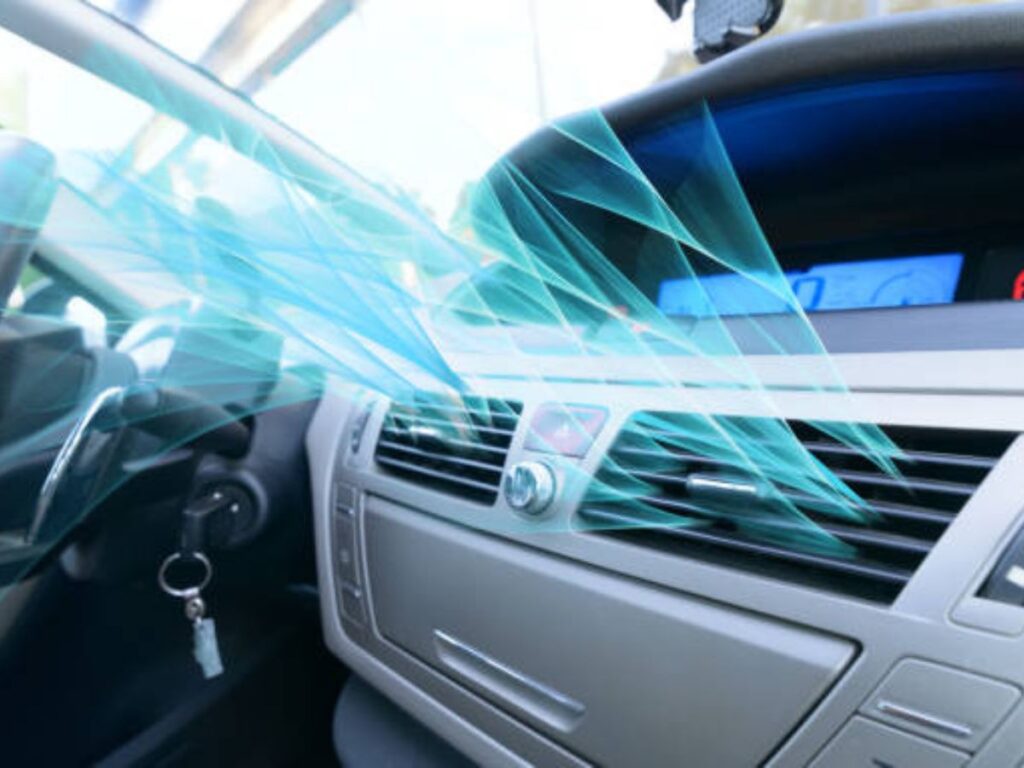An air gap security precaution isolates a network or computer and prevents it from connecting to the outside world. An air-gapped computer cannot connect physically or wirelessly with other network components or computers because of its physical separation.
Table of Contents
ToggleWhat is an Air Gap?
A network security feature known as an air gap, separated network, air gapping, or air wall is used on one or more computers to ensure that a safe network is isolated physically from other insecure computer networks like the open internet or a vulnerable local area network.
There are significant risks to cyber security. Organizations frequently transfer sensitive data across networks, which has led to an increase in cyberattacks. Airgaps protect critical computer data or systems against potential attacks, such as those from scammers, keyloggers, ransomware, or malware.
To shift data between an air-gapped system and a network or a computer, firstly, you have to copy the data on a removable media device, like a USB drive, and then physically transport it to the air-gapped network.
The process of air gapping involves separating a computer or other equipment from any other devices that might be linked to an encrypted channel. While not completely secure, the cyber security mechanism known as air gapping significantly reduces the risk of a breach.
The term “air-gapped computer” refers to a device that has been physically disconnected from the internet or separated from any other networks. To put it another way, an air-gapped computer is not linked to the internet or to any other system that can access the internet.
What does gapped mean?
A connection between two systems at which they are neither physically attached nor any logical link is mechanized (only human control and manual operation are used to transfer data through the interface.
Many different kinds of essential systems are shielded from hackers and other nefarious threat actors via air-gapped networking. Backup and recovery techniques also employ air gaps. Air gapping data backups is a security precaution that can help with recovery efforts.
Gapped computers are often situated in secure areas, such as a segregated server facility with high security. Only a small number of trustworthy users can access air-gapped systems due to access restrictions put in place as a safety measure.
Types of Air Gaps
· Logical Air Gap
A network-connected technology innovation that is separated and safeguarded via logical procedures is referred to as having an air gap. The same security consequences that are feasible with a physical air gap, for instance, can be attained using encryption and hashing in conjunction with role-based access controls. Even if someone gains access to the digital item, it cannot be read, taken, or altered.
· Separate Air-Gapped Systems
You can create an air gap by simply unplugging a gadget from a connection. For instance, two servers could be housed in the same rack, but they could still be air-gapped apart from one another because it is not connected to the network on the other
· Total Physical Air Gaps
This entails securing digital assets in an environment that is physically isolated from any network-connected technologies. There are no network connections for a digital object within a complete physical air gap. Anyone wishing to access it physically and upload data to it must do so by passing through physical security obstacles, which is typically required.
Problems with Air Gapping
Even though some organizations consider air gapping to be a practical security technique, air gaps are diminishing as a result of the following issues.
· Supply-chain Attacks
Updated software that is transferred to air-gapped systems can have a virus installed on it. It is a kind of cyberattack targeting businesses by concentrating on supply chains with weak spots. The connection of all the people, businesses, resources, tasks, activities and technological advancements involved in the production and distribution of a good is known as the supply chain.
· Electromagnetic bombardment
The vulnerability of air-gapped systems to electromagnetic leakage makes it possible for malevolent individuals to examine waveforms released by the CPU, chassis fans, or wires to attack the system. They are side-channel attacks that involve monitoring the electromagnetic radiation that a target device emits and analyzing the resulting signal.
· Insider Attacks and Human Mistakes
Traditionally, a USB or other portable storage device must be used to transfer data to an air-gapped system. Infected USB flash drives may be used to access data from an air-gapped system if brought onto the property. Users could also unintentionally forget to secure USB ports or lock doors. The maintenance of cybersecurity depends on preventing insider risk and human mistakes.
· Manual Modifications
Air-gapped systems are unable to automatically update their software over the internet. Instead, new patches and updates must be downloaded and installed manually by systems administrators. This calls for additional manual effort, and if system administrators let software upgrades slide, their air-gapped systems’ software will become outdated, leaving the system vulnerable to new malware threats.
Relevance of Air-gapped Technology today
The air gap technique appears to be a useful security tool because it may protect data from numerous dangers including digital theft. Its downside has always been that it is inaccessible. Having the physical manpower to connect discs to the web has not presented a challenge for organizations because they have been using this technique for many years. However, the air gap approach can be used today, although it is no longer practicable and has some drawbacks.
· Unknown gadgets
It is conceivable that your air-gapped network has a Broadband connection that nobody is aware of because there are so many devices linked to the Internet and links between devices. Additionally, businesses may find equipment that no one was aware even existed, much less had a network connection when they scan the system to compile a list of all their network-connected devices. Also keep in mind that even if a system is physically isolated, hackers can still access it using extremely advanced technology to steal or corrupt data.
· Inapplicable today
Organizations miss out on sensitive data because of air gapping. The extremely valuable data that these technologies produce cannot be used by organizations. Businesses can gain from and increase their efficiency with the use of real-time data analysis. However, gapping makes it challenging to retrieve the data, making a rapid evaluation of this data extremely challenging.
· Erroneous Feeling of Security
If created and maintained correctly, the air gap can be a very strong defense against cyberattacks. Gapped networks, however, are open to deliberate attacks. In the contemporary world, there are several ways to circumvent this security precaution. Additionally, a gapped device requires its software to be updated on a regular basis, which is challenging because it must be done manually. Air-gapped systems become more vulnerable and the likelihood of a security breach rises when updates aren’t applied in a timely manner.
Wrapping it up
Everyone who uses computers that are air-gapped and have sensitive data on them has to be alert of this potential and take the necessary precautions to boost security. When it comes to security, air gaps are frequently used in the critical infrastructure sector since vital operations might be disrupted or stopped by a cyberattack.



